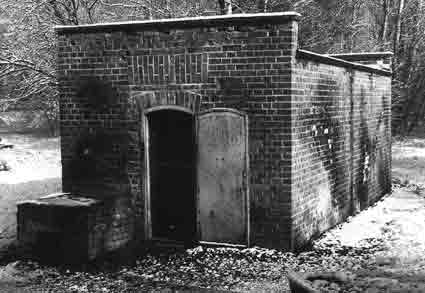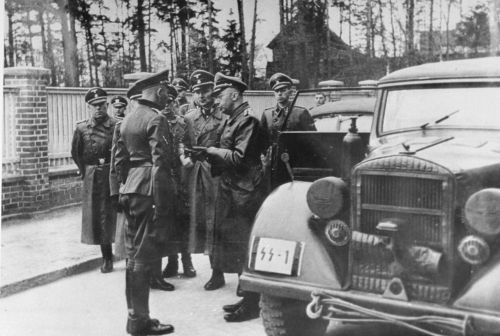Stutthof: Horrors of Nazi camp where Jews were sent to die
Daily Mail
September 30, 2021

The Stutthof concentration camp
The Stutthof camp was established in 1939 when Germany invaded Poland, and enlarged in 1943 with a new camp surrounded by electrified barbed-wire fences.
The camp underwent several iterations, initially being used as the main collection point for Jews and non-Jewish Poles removed from the nearby city of Danzig on the Baltic Sea coast.
From about 1940 onward, it was used as a so-called 'work education camp' where forced laborers, primarily Polish and Soviet citizens who had run afoul of their Nazi oppressors, were sent to serve sentences and often died. Others incarcerated there included criminals, political prisoners, homosexuals and Jehovah's Witnesses.
From mid-1944, it was filled with tens of thousands of Jews from ghettos being cleared by the Nazis in the Baltics as well as from Auschwitz, which was overflowing, and thousands of Polish civilians swept up in the brutal suppression of the Warsaw uprising.

A naked
prisoner is led to an execution site in the
Stutthof concentration camp, where others
either have been
shot already or forced to lie face down
prior to being shot
Stutthof concentration camp, where others either have been
shot already or forced to lie face down prior to being shot
As many as 100,000 people would eventually be deported there, some of them moved from other camps abandoned by the Nazis in the later stages of the war.
In addition to gas chambers and lethal injections, many prisoners died of disease in the camp's horrific conditions under the supervision of the SS.
Two ovens of the crematorium at the Stutthof concentration camp

Stutthof gas chamber
Around 60,000 people are thought to have died in the camp, while another 25,000 perished while evacuating in the chaotic final weeks of the Third Reich.
Finally liberated by Soviet forces in May 1945, the camp is now once again within Poland's borders, with the town going by the Polish name of Sztutowo.
Historian Janina Grabowska-Chalka, long-time director of the Stutthof Museum, described everyday life in the camp as brutal.
'In the Stutthof concentration camp, all prisoners, men, women and children, were obliged to work. Hard work that exceeded human strength determined the rhythm of life and death in the camp.
'Stutthof belonged to the camps where very hard living conditions prevailed,' she said.

Himmler visits the camp on November 23, 1941
Holocaust survivor Abraham Koryski gave evidence in 2019 in which he detailed the horrors he endured at the Stutthoff concentration camp in World War II.
'We were beaten constantly, the whole time, even while working,' Koryski told the Hamburg District Court, according to DW.
He added that SS guards would put on sadistic 'torture shows' including one in which a son was forced to beat his father to death in front of other inmates.
Koryski said: 'You didn't know if the officers were acting on orders or if they did it on their breaks.'
Holocaust survivor Manfred Goldberg told the Duke and Duchess of Cambridge in 2017: 'Jewish lives just did not count. We had to assemble in a square. They had erected an enormous gallows with eight nooses hanging down, then one by one we had to watch these innocent men being hanged.'
1 comment:
Sad.
Post a Comment